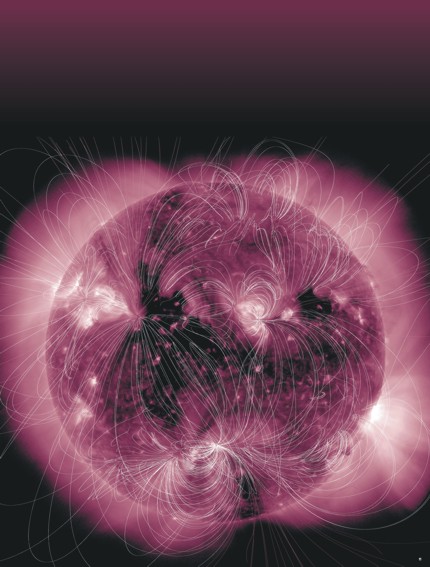A watchful eye on the Sun’s corona
DOI: 10.1063/1.3554325
A year ago this month, NASA launched the Solar Dynamics Observatory with the goal of studying the Sun’s atmosphere at small space and time scales so as to better understand the Sun’s dynamic processes and their effects, including space weather near Earth. Prior missions had shown that solar phenomena can have time scales as short as minutes, so every 10 seconds since its first light last April, the SDO’s Atmospheric Imaging Assembly (AIA), built by the Lockheed Martin Solar Astrophysics Laboratory, has been taking high-resolution images of the solar corona in multiple wavelengths, from the near to the extreme UV.
Shown here is a representative AIA image at 211 Å, taken last October. Corresponding to a characteristic temperature of 2 × 106 K, that wavelength is sensitive to the corona and to magnetically active regions. The white lines superimposed on the image are the calculated magnetic field lines. They are most dense near the active regions, but they also link other areas across the Sun. For more AIA images, go to http://sdowww.lmsal.com/suntoday
To submit candidate images for Back Scatter, visit http://www.physicstoday.org/backscatter.html

Image courtesy of NASA/SDO and LMSAL.





